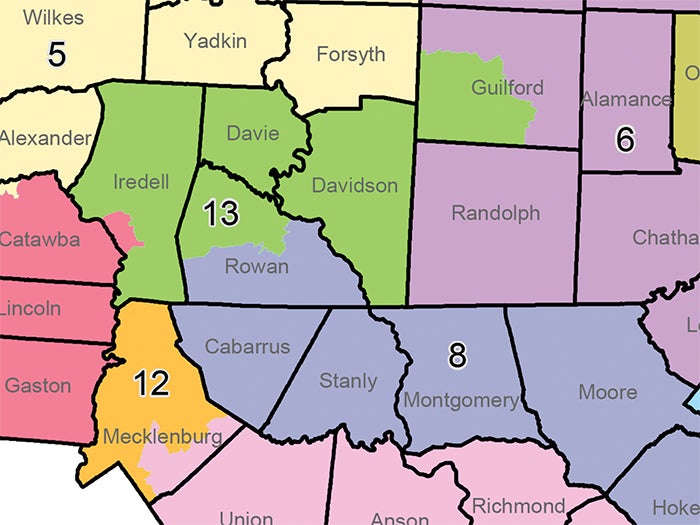Congressional districts map near OK
Published 7:30 am Friday, February 19, 2016

- A map approved by the N.C. Senate on Thursday would split Rowan County between the 8th and 13th congressional districts.
By Jonathan Drew and Gary D. Robertson
Associated Press
RALEIGH (AP) — The court-mandated overhaul of North Carolina’s congressional districts was a step away from completion Thursday after Senate Republicans capped a whirlwind redistricting effort by sending a new map to their House colleagues.
Uncertainty remained, though, over whether the U.S. Supreme Court would step in and render the work moot by allowing current maps to be used in March 15 elections. The legislation passed by the Senate would automatically revert the districts back to their existing boundaries if the high court gives the state’s Republican leaders a favorable ruling.
The House was scheduled to vote on the new boundaries on Friday as part of a special session called by the governor. The House also approved delaying the congressional primary until June 7 in a bill heading to the Senate.
Before the Senate voted on the new map, a lengthy debate included impassioned speeches by Democrats who argued Republicans went too far in seeking to maintain their 10-3 advantage in the congressional delegation. Republicans countered that political advantage wasn’t considered to the detriment of the other criteria, adding that Democrats drew boundaries to their liking when they were in power in the state.
“Your predecessors wrote the book on it,” Sen. Jerry Tillman, R-Randolph, said, addressing Democrats. “It’s called ‘If You Win, You Draw the Maps.’ And I don’t believe that’s ever going to change.”
The hasty redistricting process was set in motion earlier this month after a federal court struck down the majority black 1st and 12th Districts, ruling that race was used illegally to determine their makeup. Republicans disagree with the ruling but created new lines to ensure they meet the court’s deadline for a new map by Friday.
Calling the new map “partisan gerrymandering at its worst,” Sen. Floyd McKissick, D-Durham, argued the mapmakers’ emphasis on giving Republican candidates an advantage would open them up to further legal challenges. “Partisan advantage” was one of seven criteria approved by Republican mapmakers as they set out to draw new boundaries.
Sen. Josh Stein, D-Wake, said that while North Carolina’s mix of political views has made it extremely competitive in presidential races, the new map unfairly groups Democrats in ways that dilute their voting power.
“This map wastes hundreds of thousands of votes of North Carolina citizens simply because of what party they’re affiliated with,” he said.
Based on recent statewide elections, the proposed map appears to give Republicans a good chance to retain their current 10-3 advantage within North Carolina’s congressional delegation. The Republican mapmakers have said they believe Democrats will still have an edge in the 1st, 4th and 12th Districts.
Shortly before his chamber’s vote was taken, Senate leader Phil Berger said the map was “drawn to harmonize the criteria,” as opposed to wringing out the biggest edge possible for Republicans.
“I have no question that if the goal had been to maximize political advantage, that you could have drawn … an 11-2 or maybe even a 12-1 map. But it would have been God-awful looking,” he said.
In striking down the 1st and 12th, the federal judges cited the increase in the black voting-age population in the two districts during the 2011 redistricting while calling the boundaries unconstitutional. GOP legislators decided not to use racial demographic data in drawing the new map, but figures posted on the General Assembly website show the black population fell in the districts compared to their existing configuration.
The black voting-age population would be 44 percent in the 1st District and 35 percent in the 12th District, according to the legislative document.
Republican legislators are still waiting to hear from the U.S. Supreme Court after filing an emergency appeal arguing that redrawing the map this close to an election would create confusion among voters.
The House bill changing the date of the congressional primary also would eliminate runoffs for all 2016 primaries, including those still being held in March for state lawmakers and others. Right now a leading primary candidate must get more than 40 percent of the vote to avoid a runoff.




